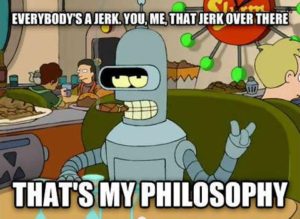
Just In case you couldn’t infer this from my previous posts some folks consider me opinionated and occasionally dogmatic. What else would you expect from a born and raised New Yorker, who grew up in a household where arguing your point was considered a cultural birthright!
Unfortunately, while having strong opinions and ideas can be a positive, I’ve found throughout my career that those ideas don’t always resonate with coworkers. Even when those ideas are sound. When I started to lead and manage larger teams this increasingly became a handicap and I soon realized I needed a better way to get my thoughts across.
Enter Pete Carroll. That’s right, the same Pete Carrol who led the Seattle Seahawks to two super bowls and USC to two college national championships. Not too long ago a good friend and neighbor happened to tell me about a management training class he attended based on material from Pete Carroll and his “Win Forever” philosophy. It sounded very compelling and I immediately purchased Pete’s book based on the same concepts.
It was immediately clear from reading this book that Pete Carroll had faced similar challenges earlier in his career.
“But while I had a sense inside me of what we needed, I hadn’t articulated it very well. I didn’t have the details worked out in my own mind so that I could lay them out clearly and convincingly to anybody else”
In short, this book preaches a simple strategy for dealing with an inability to convey your ideas, which is to write them down, iterate on them, and formulate them into a single cohesive vision. By doing so you change the conversation from “hey, here is my opinion” to “hey, I have a strategy for winning and here it is”. Or in Pete’s words;
“by December I finally had a clear, organized template of my core values , my philosophy, and – most importantly – my overarching vision for what I wanted to stand for as a person, a coach, and a competitor”
Armed with a singular vision and philosophy you have a solid foundation to convey your thoughts. And suddenly you have transformed disparate ideas into a recipe for success. The implications of documenting your philosophy are huge and by doing so you will:
- Set clear expectations for your employees
- Set expectations for executives, higher level managers and peers for how you operate and how it will benefit them
- Have a recipe for success that you can continually improve and iterate on
With this information in mind I decided to take years of ideas I had accumulated and started to jot them down. I refined them and wove them into overarching vision. And when I thought about what I was ultimately trying to achieve it became clear that I was always trying to deliver truly innovative software to as many people as possible. And so my Innovate for the Masses™ philosophy was born. I present it to you below unedited. It is a continual work in progress but something that has served me well so far.
Philosophy: Innovate for the Masses™ |
|
Innovate for the Masses™ |
|
|
|
How we do it |
|
|
|
Expectations for our people |
|
|
Having a vision and philosophy is not all rainbows and unicorns. Creating a philosophy and broadcasting it to your coworkers is the equivalent of driving a giant metal stake deep into the ground. You may find throughout the course of your career that sometimes people don’t agree with your strategy and when they don’t you only have three options, change your strategy, change their minds, or move on. Or again to quote Pete:
“Coach Seifert was specifically adamant that I not change who I was or my mentality. He said clearly “Pete, you’ve got to do it the way you know how.” After my experience in New York, I wondered if I shouldn’t try to be more political, but the advice I got from the two mentors was uncompromising – and some of the best I ever received.”
In closing if you are anything like me or Pete Carroll I strongly encourage you to write down your great ideas and formulate them into a cohesive philosophy. It will be will worth your while.
**For reference Pete Carroll explicitly calls out John Wooden for influencing his strategies and techniques. I highly encourage people to also read John Wooden’s book “Wooden on Leadership”

Pingback:End-to-End Speech Recognition: Part 1 – Neural Networks for Executives (I Mean Dummies) – Speech Wrecko